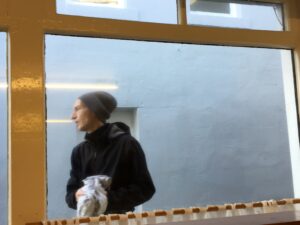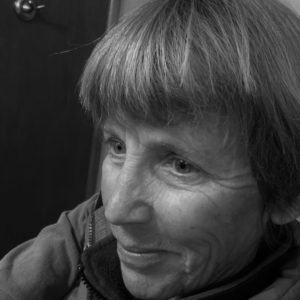 When I first arrived in town—this town—in 1979, it was a low-built place, home to thirty-thousand people, all of whom seemed to know one another either by blood relation, marriage, or friendship. And romance, of course, for we were overwhelmingly young and romantic.
When I first arrived in town—this town—in 1979, it was a low-built place, home to thirty-thousand people, all of whom seemed to know one another either by blood relation, marriage, or friendship. And romance, of course, for we were overwhelmingly young and romantic.
Like many of us, I came to town in order to be closer to the canyon. The canyon always meant Grand Canyon, just as the river always meant the Colorado. It was easy to get on the river if you had a flexible life and were willing to cook or scrub pots or both, and sometimes someone would let you row. The first time I rowed my own boat was a month-long trip in a 12-foot Apache, the month of November and wetsuits every day. I survived it and so did my fearless passenger, though our hands were beat up and our feet were raw.
Some of us were here in order to be nearer the canyon country of southern Utah, and the San Juan River. All you had to do was throw a kayak in someone’s truck or on top of their VW bus, catch a Navajo taco at the Tuba City truck stop, and bed down under the stars at Sand Island, then wake up and shove off. Mexican Hat or Clay Hills Crossing, take your pick. No one was keeping track and there were always enough mystery cans, the ones with their labels worn off, in the bottom of your boat to keep you fed for another day or two.
The town itself was the place we returned to and adventured out from, and of course some of us went to school here and studied things that took us adventuring on rivers and in canyons. There were the photographers too, but few writers. I was trying to survive as a writer back then but if there were others they eluded me. I lived five miles out what was then called Leupp Road and is now called Townsend Winona, and town seemed a long way away. That might have been the reason I didn’t find kinship. But even now, writers don’t flock like photographers do. There’s something that photographs capture that words cannot, and canyon country has always belonged to the camera.
Why all this reminiscence as the first cold days of fall set in, and the jack-o’-lanterns find their way to the porch steps, and kids small and large start anticipating the sweet taste of Milk Duds, Skittles, and Jolly Ranchers? Because Halloween, more than anything—more than candy and pumpkins and spooky costumes—is a celebration of change. Things change. Our flesh becomes earth and our spirits duck behind the curtain, behind the veil that seems to separate the world we know, our familiar world, from the world of ancestors and hungry ghosts. At Halloween the veil lifts, and beings of spirit and flesh mingle in a glad and terrifying confusion. Our eyes are opened to the less tangible, the more intuitive, to a world where we reside alongside the unimaginable, like roommates meeting in the kitchen.
These days on autumn’s cusp are charmed and unlucky, magical and mundane. The smashed pumpkins, the toilet paper in the trees, the residue of superstition in the air and the energetic currents generated by the excitement of so many pint-sized witches and ghosts and goblins. The poles conjoin. Princesses walk arm-in-arm with vampires. It’s a time when opposites weave themselves into the same rope, when black cats walk under ladders to roll in four-leaf clovers, and spirit and flesh regard each other anew through a polished window.
And it’s a time when I look back at what was, and try and follow forward the footsteps of the past as they approach today. Not to revel in what is no longer, nor to damn the present orientation of our town—its greed, its shortsightedness, especially when it comes to all things water—but to find in our ephemeral traces a promise of impermanence, a sense of flux, a high probability that the mistakes we are now making will be unmade someday.
How surprising it is that this assurance brings such comfort.

